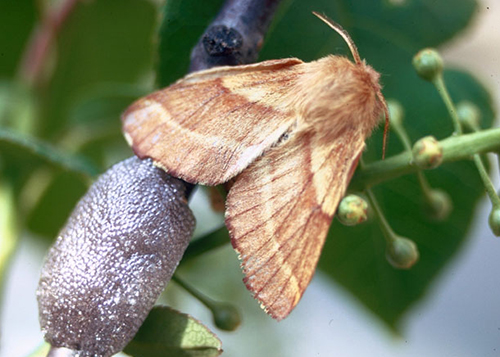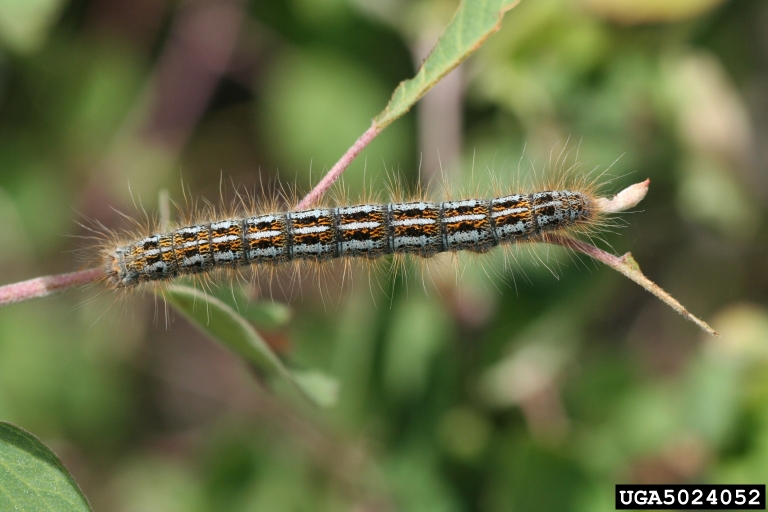Integrated Pest Management
Western Tent Caterpillar
Malacosoma californicum
Pest Description
- adults: wingspan 1 – 2 inches; heavy bodied; dark red brown to yellow, tan or gray
- larvae: ~ 2 inches; hairy; coloration can be highly variable
- pupae: made of white silk with a white to yellow dusting
- eggs: brown to gray, shiny; laid in masses on branches
Host Plants, Diet & Damage
- quaking aspen, alder, bitterbrush, California lilac, chokecherry, cottonwood, crabapple, fruit trees, mountain mahogany, nine-bark, oak, poplar, serviceberry, sumac, wild currant and wild rose
- feed on leaves within unsightly, silken tents
- larvae can defoliate leaves or trees
- yearly defoliation can cause reduced growth or kill trees
Biology, Life Cycle & Damaging Life Stage
- overwinter as unhatched larvae within eggs on host trees
- larvae hatch around budbreak in spring
- larvae feed within silken tents; later larval stages may become solitary
- pupation occurs 1 to 1 1/2 months after spring egg hatch
- pupae are silken cocoons stuck to host trees, non-host trees or in leaf litter
- adults fly late-July through August and lay egg masses
- one generation per year in northern Utah
- larvae are the damaging stage
IPM Recommendations
- Manage trees to improve or maintain overall health.
- Monitor trees after budbreak for larvae and silken tents.
- Severe damage to ornamental plants is uncommon; tolerate pest.
- Apply an insecticide (Bacillus thuringiensis var. kurstaki; carbamate; organophosphate; pyrethroid; spinosyn) to foliage targeting small larvae.




